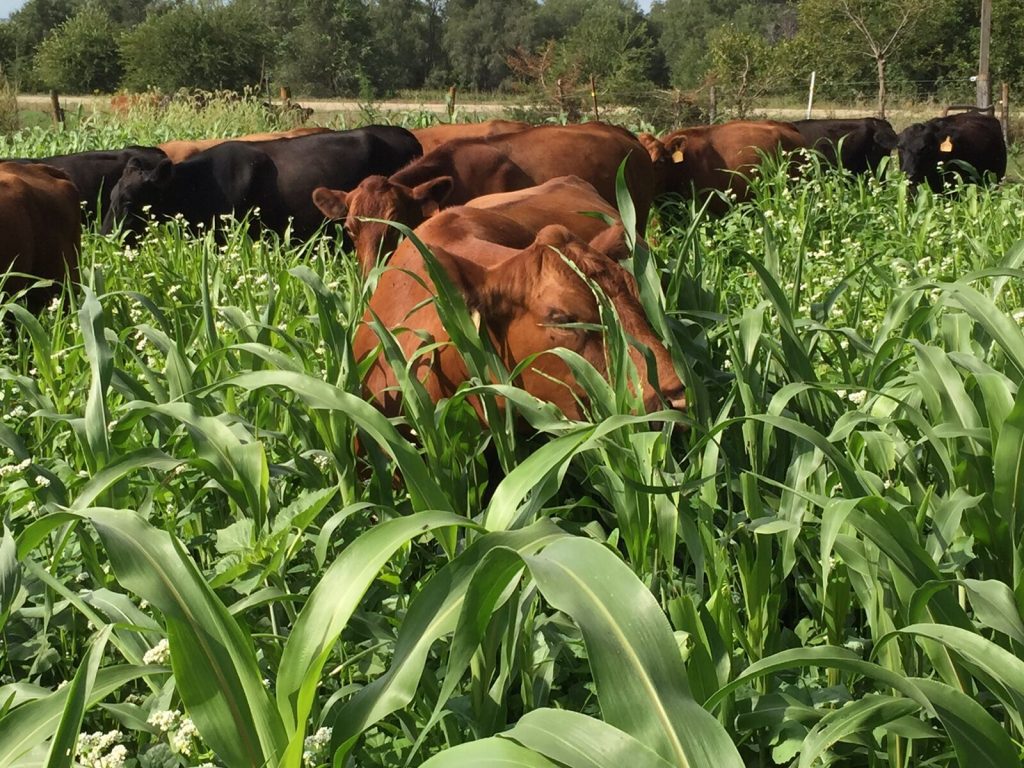Nitrate Poisoning
Nitrate poisoning can occur when growing forages have excessive amounts of nitrates in the soil and/or when the forage becomes stressed. When high nitrate forages are ingested by a ruminant animal, the nitrate is converted to nitrite, which when excessively absorbed into the bloodstream can cause the blood to cease transporting oxygen. Nearly any species can hyper-accumulate nitrates to a toxic level, but some species such as corn, cereal grains, millets, sorghums, and brassicas are more prone than others, so choose species that pose less risk if the soil has excessive nitrogen accumulations. Nitrates accumulate in higher concentrations (as much as three times) in the bottom six inches, so manage grazing or cutting to only utilize the biomass above six inches. Younger, lush plant material poses a much higher risk of nitrate accumulation. Allowing plants to become more mature may reduce forage quality, but may be safer to graze. Weather conditions that stress or limit plant growth such as drought or extended periods of cool, cloudy conditions increases plant nitrates concentrations. Waiting for better growing conditions may help the forage be safer to consume. High nitrate forage may still be utilized if ensiled as the fermentation microbes can actually lower the concentration within the forage.
Management
 Tips to Reduce Risk of Nitrates:
Tips to Reduce Risk of Nitrates:
- Do not graze high nitrate forages with animals that
are thin or are in poor health. - Be sure that animals have a full stomach/rumen before
turning into paddock that may be higher in nitrates. - Limit grazing intake of higher nitrate material for the
first couple of weeks with increasing increments to
acclimate the livestock’s rumen to the higher concentration
of nitrates. - High nitrate forages can be blended with low nitrate
forages to form a more balanced ration. - Commercial feed additives are available to help the
rumen safely digest higher nitrate rations. - Lighter stocking densities will allow animals to freely
graze the upper portions of the plants without needing
to consume the more toxic lower portions. - Adequate water supplies are needed to dilute nitrates
in the rumen.
If there are any concerns with prussic acid or high nitrates in your forage, always get your forage tested at a
reputable lab.
Excerpt from “Nitrate Toxicity in Livestock” from the Oklahoma Cooperative Extension Services:
“Nitrate toxicity of cattle was noted as early as 1895 with corn-stalk poisoning. However, at that time nitrate was not recognized as the principle toxicant. In the late 1930s, after an outbreak of oat-hay poisoning in the high plains region, an indictment of nitrate was finally made.”
 Tips to Reduce Risk of Nitrates:
Tips to Reduce Risk of Nitrates: